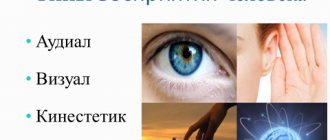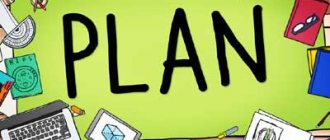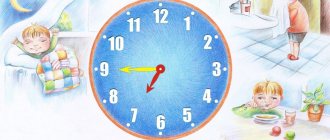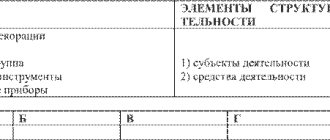First, let's define what a psychological portrait of a person is. A psychological portrait of a personality is a description of the inner world of an individual. Personality type, temperament, character, interests, abilities and much more are considered. Describing the psychological characteristics of a person is a complex process that involves several stages. Each of them has its own nuances and meaning, none of them should be missed. Let's figure out how and why you can create a psychological (socio-psychological) portrait of a personality.
Why do you need a psychological portrait of a personality?
Personality analysis helps in the work of a psychologist, social educator, psychiatrist, criminologist, and teacher. With its help, you can find an approach to any person, predict his reactions and actions, and select the optimal plan for rehabilitation or other work with the individual.
In addition, a psychological portrait is drawn up during the selection of personnel in marriage agencies. The ability to analyze the components of a portrait is useful in business for analyzing customers, partners, and clients. Personality studies are also used in career guidance.
In the end, the picture being compiled will be useful to anyone who wants to easily find mutual understanding with people. Based on your portrait, you can improve your relationships with your loved ones. Identifying and learning your psychological portrait is useful for self-development.
Is it possible to make up by appearance?
Some people are confident that psychologists, by looking at a person, can create a complete portrait of a person. Actually this is not true. You can't judge by appearance alone, especially when it comes to photography.
However, there are areas that do just that:
- physiognomy – the science of the connection between psychological and anatomical characteristics of a person;
- Kinesics is a science that studies non-verbal communication (gestures, facial expressions, body position, movements, etc.).
And yet, to paint a portrait, it is better to pay attention to the study of the inner world, and not to the appearance. Some researchers still consider physiognomy a pseudoscience.
Tests for children and teenagers
In this category I have collected the most interesting and useful techniques for the younger generation. Teenagers can go through them on their own, small children - with the help of their parents.
- Test “House, tree, person”
The projective technique is very popular among psychologists. With its help, you can conduct a deep analysis of the subject’s personality. Suitable for any age, but especially often used for testing children. The subject is asked to draw a house, a tree and a person on an A4 sheet of paper. After this, you need to answer 158 questions about the finished drawing.
- Honey-Mumford Preferred Learning Style Test
The technique will help identify the most effective ways of learning for your child. The speed and quality of learning the material depends on the correct approach to choosing a teaching style. It is advisable that the child take it before entering school. This will give you the opportunity to help him adapt faster.
- Diagnosis of mental stress and neurotic tendencies in children and adolescents
Parents need to take this test. It contains 45 questions regarding the child’s behavior and well-being, which must be answered “yes” or “no.” It allows you to assess the severity of disorders such as autonomic dysfunction, disturbances of appetite, sleep and behavior, depressive and asthenic disorders, phobias and fears.
- Test for schoolchildren on interpersonal relationships
The technique helps determine the attitude of children aged 10–16 years towards themselves and other people. It is very important that a child at this age develops the ability to accept not only human advantages, but also shortcomings, and to show tolerance for other people’s weaknesses and mistakes. This is the key to effective interpersonal interaction.
- Career Guidance Test
Closer to finishing school, the child begins to think about choosing a profession. This choice is very difficult and important. To make work enjoyable and as successful as possible, you need to take into account individual characteristics. This is why the methodology was created. It helps to determine what a person is best able to interact with in the process of activity: with people, nature, technology, sign systems or artistic images.
Components of a psychological portrait of a personality
Let's look at how to create a psychological portrait of a person. There are various modifications of the portrait, but most often its structure includes the following elements:
- human temperament (type of nervous system);
- IQ and predisposition to intellectual work;
- leading character traits;
- personality orientation;
- level of self-esteem;
- capabilities;
- values;
- communication skills;
- emotional-volitional sphere;
- motivational sphere;
- individualism-collectivism;
- other.
During diagnosis, it is important to maintain objectivity, clearly distinguish between facts and speculation, and exclude personal attitudes towards the person being examined. Therefore, it is better to entrust this to a professional psychologist. However, in the course of diagnosis, he also uses different methods: observation, tests and questionnaires, conversations with the subject’s friends, etc.
Each specialist has his own arsenal of tools. In addition, the set of diagnostic techniques depends on the specific case. Universal tests are always used, for example, to determine the temperament and orientation of a person, and methods of a narrower spectrum are selected individually. For example, in one case it is important to assess a person’s motivation (type and level), in another case - the level of anxiety or neuroticism, in a third - the severity of leadership qualities, etc.
In addition, it is important to consider the age of the subject. For example, to determine the psychological portrait of a child’s personality, it is better to choose projective tests: “Non-existent animal”, “House, person, tree”, “Unfinished sentences”.
Important! It is recommended to draw up a psychological portrait professionally, that is, trust a psychologist.
Nature
In the same situation, people behave differently. The difference in behavior is determined by temperament. It is the most important factor in constructing a portrait in psychology.
Psychology explains this term as the psyche of the individual, with the characteristics of the nervous system. This is the content, the intensity of psychological processes.
There are 4 types of temperament:
- Melancholic people are soft personalities capable of empathy. Dreamy, withdrawn, vulnerable.
- Phlegmatic people are patient, reliable, constant people who have good control over their behavior and desires. They cannot work in an energetic team; they need to find their own pace.
- Cholerics are energetic, active individuals who have increased determination. The disadvantages include increased aggressiveness, conflict, and lack of patience.
- Sanguine people are enthusiastic, cheerful people who love to make new acquaintances. The disadvantages include unreliability, frivolity, scatteredness.
How to make a psychological portrait of a personality
To draw up a portrait, you need to ask a person to undergo several tests. However, this is not the only way. Let's consider popular methods and algorithms for drawing up a psychological portrait.
Eysenck test for determining temperament
The subject is asked to answer 57 questions. Based on the results of the survey, a graph is drawn up that shows the share of each type of temperament (not a single type is found in its pure form).
The test reveals not only the type of temperament (sanguine, choleric, phlegmatic, melancholic), but also the orientation of the personality: extroversion, introversion, ambiversion. The test also shows the client’s emotional stability or instability.
Eysenck IQ test
It determines not only intellectual development, but also creativity and the ability to think logically. The subject is asked to solve several problems. Then the results are summed up. The average IQ is 100-120 points. A score above 150 indicates genius, less than 80 indicates retardation.
Cattell's 16 factor questionnaire
The subject is asked to answer 187 questions. The technique allows you to assess several important psychological characteristics at once:
- isolation - sociability;
- concrete – abstract thinking;
- emotional stability – instability;
- the habit of submission is the habit of dominating;
- restraint - expressiveness;
- adherence to norms and discipline – low normative behavior;
- timidity - courage;
- realism - sensuality;
- suspicion - gullibility;
- practicality - dreaminess;
- naivety - insight;
- calm – anxiety;
- conservatism - radicalism;
- conformism - nonconformism;
- weak self-control – high self-control;
- relaxation – emotional tension.
Based on this alone, it is possible to create a detailed portrait of a personality. And if you also evaluate paired combinations of indicators, you can find out the following:
- leadership potential;
- communication skills and need for communication;
- attitude towards other people;
- intelligence;
- flexibility and speed of mind;
- emotional sensitivity;
- risk appetite;
- level of self-discipline and adherence to morality.
If you conduct this test in full, consider all the interpretations, then you can only use this technique alone to create a full-fledged portrait of a person. For example, this will be quite enough for personnel selection.
Eysenck test “Self-assessment of mental states”
The technique allows you to identify and assess the severity of anxiety, frustration, aggressiveness, and rigidity. It is noteworthy that the survey results describe the client’s subjective feeling. This test is often used by psychologists and psychiatrists.
Self-assessment of stress resistance (N.V. Kirsheva, N.V. Ryabchikova)
The subject is asked to answer 18 questions. Based on the survey results, you can determine the level of stress resistance: from very low to very high. The test results will be useful when choosing a profession and job, selecting personnel, and in consultations with a psychologist. This questionnaire is also suitable for self-diagnosis and work on self-regulation and your emotions.
Test S.V. Kovalev on self-esteem
The subject is asked to answer 32 questions. Based on the survey results, you can determine the type of self-esteem: adequate high, adequate average, inadequate low. Unfortunately, the test does not detect inadequate high self-esteem.
PIK methodology (indicators of individualism - collectivism, author L. G. Pochebut)
The subject is asked to answer 30 questions, or rather, choose one of the statements in 30 groups. The answers are compared with the key, and one point is awarded for each match. Then the overall score is determined and the orientation of the subject’s personality is revealed: individualism or collectivism.
“Hierarchy of needs” as modified by I.A. Akindinova
Knowing the needs of an individual can tell a lot about priorities, values, beliefs and interests. The subject is asked to complete the phrase “I want...” and is given 15 options for continuation. You need to arrange them all in descending order of importance. The test allows you to identify the dominant need and determine the degree of satisfaction of the following needs:
- material goods,
- safety,
- interpersonal connections,
- respect from other people,
- self-realization.
The hierarchy of needs helps to understand the motivation for a particular person’s actions.
“Motivation for success and fear of failure” (FUN) questionnaire by A.A. Reana
The subject is asked to answer 20 questions, the answers are compared with the key. The total score indicates the type of motivation: fear of failure, hope of success, or a neutral indicator. The interpretation of the results describes not only the type of motivation, but also related personality traits and characteristic patterns of behavior.
Social Network Analysis
A modern method of writing a social portrait of a person. Specially trained psychologists analyze records, groups, photographs, music, videos, friends list and other data from a particular person’s page. A specialist can even distinguish true information from false information, and separate the desired image (which a person is trying to show online) from the real one. This method is often used in forensic science.
Conversation with relatives and friends
A universal method that complements any tests. It is especially often used when diagnosing a child or when working with couples, families, and groups.
Study of activity products
The method allows you to determine interests and abilities, knowledge and skills, values, priorities and much more. This method is suitable for remote diagnostics. Drawings, essays, crafts, reports, etc. are used for research. Anything that the person being examined himself did (filled out, wrote, drew, etc.) will do. This method is often used to compile a psychological portrait of famous and famous people, especially those who have already died.
Tests for borderline disorders and mental disorders
Special diagnostic techniques will help you track psychological distress and developing deviations. Their results should not be taken as diagnoses, much less self-medicate. If any indicator worries you, contact a specialist. Don't forget to report the tests you took and the results you received.
- Spielberger-Hanin Anxiety Test
Using this technique, you can diagnose both situational anxiety and personal anxiety, which is a fairly stable characteristic. High rates indicate a tendency to perceive many objectively harmless phenomena as threatening. An increased level of anxiety has a negative impact on mental state and quality of life, so it is necessary to work to bring it back to normal.
- Beck Depression Inventory
If you suffer from mood swings, loss of energy and apathy, be sure to take this test. It will help identify depression even in the early stages and determine its severity. The questionnaire consists of statements from which you need to choose those that apply to you.
For a more serious diagnosis, take a look at our selection of depression tests.
- Express diagnosis of neurosis
Neurosis is a mental disorder that is characterized by overexcitation of the nervous system, decreased performance, obsessive states and excessive anxiety. It is extremely difficult to treat in an advanced stage, but can be successfully corrected at the very beginning of the disease. Therefore, it is important not to miss this moment and contact a specialist in time.
- Test for schizophrenia
Schizophrenia is a serious mental illness that makes it difficult for a person to exist in society and often requires isolation. It is very difficult to detect it yourself, since the adequacy of perception is impaired. Using the test, you can check for symptoms of schizophrenia in loved ones by asking them 53 questions from a questionnaire.
- Chronic fatigue syndrome test
Chronic fatigue syndrome is not a mental disorder, but it may well be its cause. The nervous system is very quickly depleted under overload and malfunctions. Check with the help of this technique whether it’s time for you to seriously think about rest.
- Bassa-Darka Aggression Index
Increased aggressiveness is often a consequence of unresolved internal conflicts. If you don't do anything about it, sooner or later it can lead to affect and become the cause of destructive behavior. The test helps determine the level of aggressiveness. You have to agree or refute the presented statements, of which there are 30 in total.
- Szondi test for identifying psychological abnormalities
Let's summarize our sad selection with an interesting psychoanalytic test. It helps to identify character accentuations, that is, strongly expressed, pointed characteristics, which often become the basis for the development of all kinds of deviations. The technique is projective. You won't have to answer the questions directly. Subjects are shown a series of black and white portraits of people. You need to choose 2 most pleasant and 2 most unpleasant portraits.
An example of writing a psychological portrait of a personality: sample
Let's look at ready-made psychological personality portraits, examples and writing samples.
Example No. 1
Client Ivan Ivanov (35 years old) has the following psychological characteristics:
- Temperament: sanguine.
- IQ: average level.
- Leading character traits: persistence, a heightened sense of duty and justice.
- Communication skills: well developed. Knows how to find a common language with different people, gain trust and negotiate.
- Abilities: noticeable leadership inclinations.
- Personality orientation: extraversion.
- Self-esteem: adequate, high.
The tests themselves and the results of intermediate studies are not included. Sometimes the gender, date of birth and education of the person is indicated, but this is not necessary. If the portrait is drawn up by a psychiatrist, he can briefly describe the patient’s life history, recent shocks and traumas. When drawing up a psychological portrait of a student, the teacher can write down brief information about the family.
Interesting! There is no single ready-made sample, so most often the portrait is described in free form (unless the company where the diagnostician works specifies otherwise).
Example No. 2
There are also other design options. For example, this is what a detailed psychological portrait of a person looks like: Subject: Vasily Vasechkin.
Gender: male.
Age: 20 years old.
Education: student, studying to become a lawyer.
Methods used: Eysenck questionnaire (for temperament), Cattell test (16 personality factors), stress resistance test, motivation test (achieving success or avoiding failure).
During the diagnosis, it was revealed that the client has pronounced leadership potential, but at the same time is sometimes afraid of failures and is characterized by increased anxiety. These features distort the typical portrait of a choleric person (this temperament was identified in the subject). Anxiety is contradictorily combined with determination, and a high level of responsibility and a developed sense of duty balance the motivation to avoid failure.
Conclusion and recommendations: in general, a harmonious personality type, but due to low resistance to stress and high anxiety, problems may arise in the professional field (law). Perhaps it is worth choosing a different profession or working on developing weak qualities.
Important! In general, the algorithm for drawing up a psychological portrait is as follows: brief information about the client, a description of the elements of the portrait, a general conclusion and recommendations.
Questions to determine your psychological portrait
There are no specific questions. To find out and write your psychological portrait of a personality, it is better to use simple techniques, for example, geometric and projective tests.
One of the popular techniques is the S. Dellinger test. To describe yourself, ask just one question: “Which shape attracts me more: rectangle, square, circle, triangle or zigzag?”
The interpretation of the answer helps determine the personality type:
| Figure | Description of the psychological portrait |
| Triangle | You are a born leader, accustomed to concentrating on the main thing. You easily manage to process large amounts of information and find a common language with different people. However, excessive rationality sometimes interferes with interpersonal interaction. |
| Rectangle | You are constantly in a state of search, thirsting for change. So from time to time you turn into one of the other types. Rectangle is the most unstable personality type. |
| Square | You are not afraid of work and are used to always achieving your goal and finishing what you start. You can achieve success in any field, but it is better to give preference to intellectual work. A measured life and the same type of work are more suitable for you; you love rules and order. |
| Zigzag | The most creative type. Because you think outside the box, you can be impulsive and inconsistent, which sometimes alienates others. However, at the same time, you know how to win over people. |
| Circle | The most harmonious type. The main value for you is interpersonal relationships. You are a born psychologist and diplomat. |










